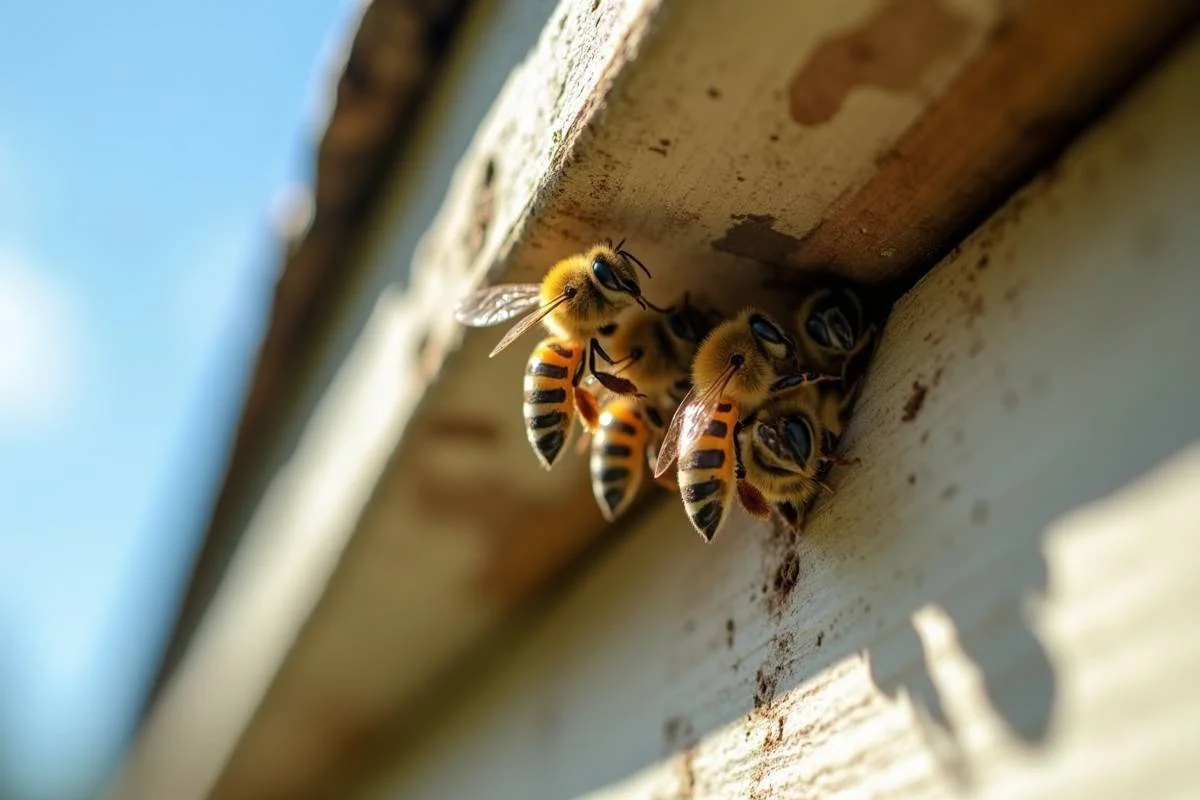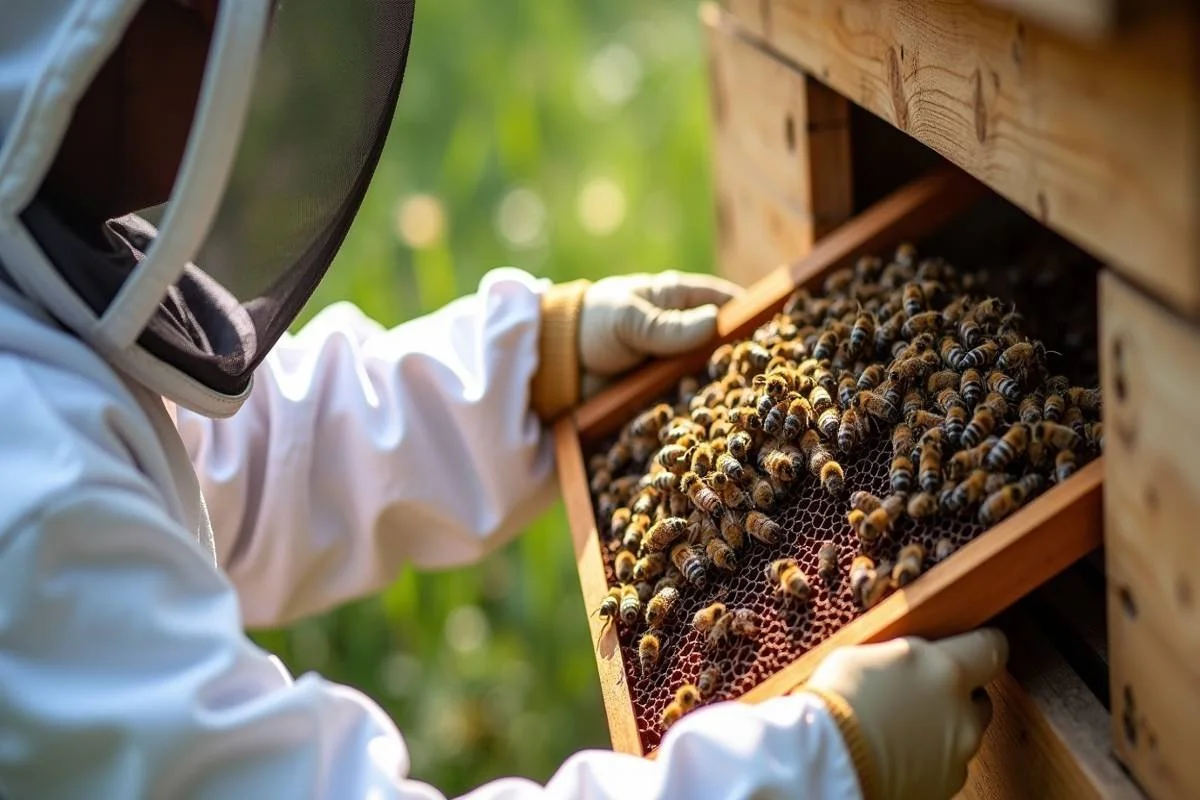Step-by-Step Guide to Live Bee Removal Without Chemicals.
Bee populations across the globe are in decline, and their survival is vital to the health of ecosystems, agriculture, and food security. While bees are essential pollinators, they occasionally build hives in places that pose risks to humans—inside walls, attics, chimneys, or near entryways. Understandably, homeowners often feel the need to remove them.
Unfortunately, traditional methods rely on pesticides or harsh chemicals, which not only destroy the colony but also leave behind toxic residues and attract new infestations. The environmentally responsible solution is live bee removal—a humane process that carefully relocates the colony without causing harm.
This professional guide outlines the step-by-step process of live bee removal without chemicals, helping property owners protect both their homes and the bees that keep our environment thriving.
Why Live Bee Removal Is the Responsible Choice
Before beginning, it is important to understand the advantages of humane bee relocation:
Environmental Protection: Bees are responsible for pollinating nearly one-third of the world’s crops. Preserving them directly supports biodiversity and agriculture.
Non-Toxic Approach: Unlike pesticides, live removal leaves no chemical residue that could harm people, pets, or the environment.
Permanent Results: Chemical extermination often fails to address honeycombs and pheromones, which attract new colonies. Live removal ensures a thorough solution.
Sustainable Practice: Relocated bees can be rehomed with local beekeepers, where they continue to produce honey and support local food systems.
Choosing live removal isn’t simply about solving a household problem—it’s about making an environmentally responsible decision.
Step 1: Confirm That They Are Bees
Correct identification is critical. Many homeowners confuse bees with wasps or hornets, which require different handling.
Honeybees: Small, golden-brown, and fuzzy with visible stripes. They live in large colonies and produce honey.
Bumblebees: Rounder, larger, and hairier; usually nest in the ground or cavities.
Wasps and Hornets: Smooth-bodied, more aggressive, and do not produce honey.
If you are uncertain, take a photo from a safe distance and consult a professional beekeeper or removal expert before taking any action.
Step 2: Locate the Hive
Bees typically enter through small cracks, vents, or holes. Observe their flight path during the day to pinpoint the entrance. Common nesting sites include:
Live Bee Removal in wall
Attics and soffits
Hollow walls
Chimneys
Under decks, sheds, or crawl spaces
Tree cavities near the property
⚠️ Important: Avoid tapping or disturbing the hive. This can provoke defensive behavior and result in stings.
Step 3: Ensure Proper Protection
Live removal requires protective measures. Professional beekeepers use specialized suits, gloves, and veils. If you are near a hive without this equipment, wear:
Thick, light-colored clothing
Long sleeves and pants
Gloves
Face and neck covering
Even with protective gear, homeowners should avoid handling large colonies themselves.
Step 4: Partner with a Professional Beekeeper or Removal Service
While small swarms may be manageable, established colonies often require professional handling. Beekeepers and eco-friendly removal companies have the expertise and equipment—such as bee vacuums, hive boxes, and transport containers—to relocate bees safely.
Many beekeepers will remove colonies at little to no cost, as they can integrate the bees into their apiaries. This mutually beneficial arrangement saves the bees and solves your problem.
Step 5: Safe Hive Extraction
When professionals perform live removal, the process generally includes:
Accessing the Hive – Carefully opening the structure (e.g., soffit, wall, or attic) to expose the colony.
Collecting the Bees – Using a low-suction bee vacuum or soft brush to transfer bees into a ventilated box.
Removing Comb and Brood – Extracting honeycomb, wax, and larvae so the colony remains intact.
Transferring to Hive Box – Placing combs and bees into a managed hive box that can serve as their permanent home.
Relocation – Transporting the colony to a secure, suitable environment such as an apiary, farm, or pollinator sanctuary.
This method ensures the bees survive and thrive in a safe location away from human dwellings.
Step 6: Clean and Repair the Area
After removal, the space must be thoroughly cleaned to prevent future infestations. Bees leave behind pheromones that attract new swarms if not addressed.
Remove wax, honey, and hive remnants completely.
Wash surfaces with a vinegar or soapy water solution.
Seal entry points with durable materials (caulk, mesh, or wood).
Cover vents and chimneys with fine screens.
Proper cleanup ensures that your home does not become a repeated target.
Step 7: Prevent Future Infestations
To minimize the risk of future colonies forming:
Inspect your property regularly, especially in spring and summer.
Seal cracks, gaps, and openings in walls and rooflines.
Store outdoor trash securely, as sweet smells attract bees.
Consider planting pollinator-friendly flowers at a distance from your home to provide safe alternatives.
These preventive steps create a balance—keeping bees alive while discouraging them from nesting in unsafe spaces.
Important Safety Considerations
Live bee removal, while humane, is not always safe for untrained individuals.
Safe live bee removal without chemicals
Allergies: Never attempt removal if you or someone nearby is allergic to stings.
Aggressive Colonies: Disturbing a large hive can result in multiple stings.
Structural Risks: Colonies in walls or attics may require construction repairs after extraction.
In such cases, professional assistance is not just advisable—it is essential.
The Broader Impact of Choosing Live Removal
Every live removal contributes to environmental preservation. By relocating bees instead of exterminating them, you are:
Supporting crop pollination and food production.
Preserving biodiversity in your community.
Reducing reliance on harmful pesticides.
Helping local beekeepers maintain healthy colonies.
In an era of declining pollinator populations, every saved colony matters.
Conclusion
Bees are not pests—they are partners in sustaining life on Earth. While their presence inside a home or building can cause concern, killing them with chemicals is not the solution.
Through live bee removal without chemicals, property owners can protect their homes, safeguard their families, and contribute to environmental conservation. From identifying the colony and contacting professionals to cleaning and sealing the area, each step plays a role in ensuring long-term success.
If you encounter a hive on your property, remember: humane removal is not only possible—it is the most responsible and sustainable choice. By taking action the right way, you help keep your home safe while preserving one of nature’s most valuable pollinators.


